Opinion & Analysis
How does the iPING putter app work?
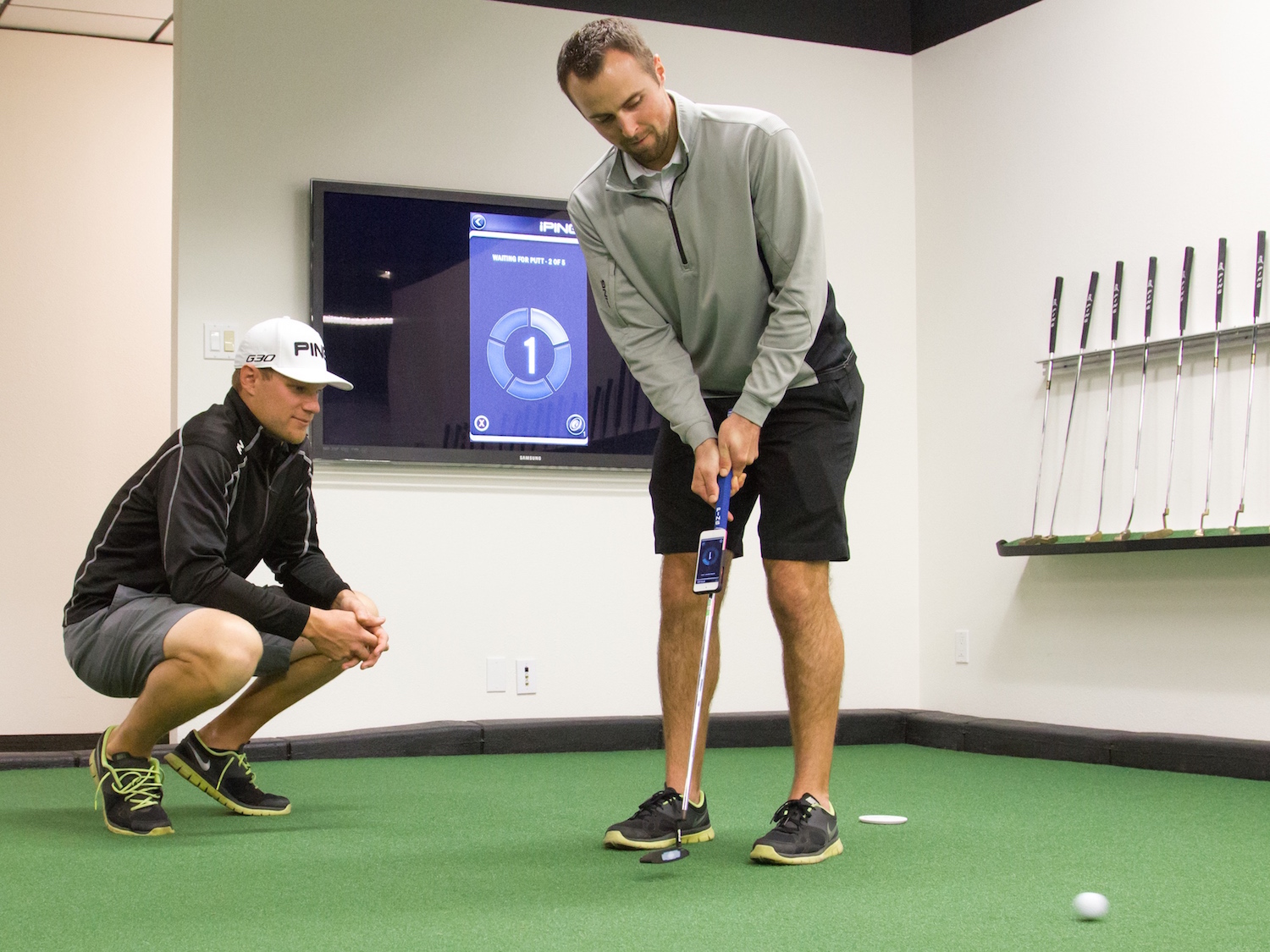
Golf is becoming more and more technological. Well, strictly speaking, the game is the same but the clubs you use and the innovations available to help analyze your swing and your ball flight are advancing fast. Here in the engineering department at Ping, we use simulation and measurement tools today that Karsten Solheim would have dreamed about. It is a great time to be a sports scientist.
iPING’s Beginnings
I remember the day in 2006 when we decided to create our own fitting software using launch-monitor data from new devices on the market such as Vector and TrackMan. I’d spent much of the previous year testing and validating a predictive ball-flight model that could take speeds, angles and spin rates and paint any golf shot into a 3D environment.
Our aim with our nFlight fitting software was to bring fitting into the 21st Century by applying real analysis to launch-monitor data and give meaningful fitting recommendations. We pioneered a few things like optimal shot bands, dispersion ellipses and gapping analysis. A couple of years later we started to talk about applying MEMS technology to measuring a club during a fitting. MEMS (Micro Electro Mechanical Systems) are small, lightweight sensors that measure movement. The devices contain two main types of sensors – three-axis gyroscopes that measure rotational movement (yaw, pitch and roll), and three-axis accelerometers that measure straight-line movement (x, y and z). These sensors are used in many different industries and can track any kind of movement, but they aren’t infallible – they drift over time and there is noise in the data. It’s not realistic to expect the sensors to keep an accurate track of the position of an object for long periods of time, but they are perfect for measuring short-duration movements.
One of our engineers had the idea to take an iPhone 4 and strap it to a putter, using the sensors in the phone itself to measure a putting stroke. I was pretty skeptical about both the sensor quality in the phone and the extra weight affecting the putting stroke, but I was happy to be proven wrong on both counts. The phone is placed close to the grip and doesn’t affect the swing weight of the putter much at all. The extra weight is easily detectible by a golfer but not distracting, even to our tour players. We also verified that the device doesn’t change the putting stroke and gives us accurate enough readings, all for the cost of a plastic cradle.
iPING reliably captures the closing angle (stroke type), impact angle, tempo, shaft lean and lie angle. It is important to note that iPING has no way to know where the hole is, which is typical for any MEMS device. As a result, you will see that many of the attributes we track are internal to the stroke, say from address to impact. We can’t tell you whether the putter face was open or closed to the target because we can’t know where the target is, however, the sensor does know which way is down by measuring gravity and this is how we measure a real shaft lean and lie angle.
Consistency is Key
So, what benefit do we get from tracking a putting stroke? Well, primarily we want to measure consistency. All our research with elite players and tour players shows that even though the motion of their putting strokes varied, the single thing they all have in common is a high degree of consistency when compared to higher-handicap players. Based on our experiments, it doesn’t seem to matter how much arc is in your stroke, if you align at the hole or consistently left or right, or if your tempo is quick or slow, so long as there is consistency in the stroke. The key was that we established a relationship between the consistency (standard deviation, the statistical term for it) of any given attribute when repeated over five putts and a player’s handicap.
Figure 1 (below) shows this relationship for closing angle. We put this together to create a score for a five-putt session in iPING that rates your consistency over five attributes against players of a certain handicap. So if your score for a session is 9.0, you putted like a typical 9-handicap player. Using this score gives players an instant understanding of what is good and bad, and allows someone to quantify whether one session is significantly better than another. For example, you can use this in practice to measure technique changes. Just try using iPING outside in the wind and then inside on a flat green to see what impact that has on your consistency.
iPING Data
When we use iPING in fitting we can take stroke type, impact angle, tempo, shaft lean, and lie angle readings to dial in the best putter for your stroke. Figure 2 shows how we would take each of the five main attributes and recommend a putter that will improve a player’s consistency. This is based on a lot of experiments in the putter lab.
There are a few things that stand out from the nearly 10 million putts registered on iPING.
- There is no such thing as Tour tempo. Tour players have an average tempo of close to 2.0 on iPING, but there are some as low as 1.4 and some over 2.5, all with good putting numbers on the tour.
- Beginner golfers often have a very flat lie angle and upwards of 10 degrees of arc in the stroke. We really don’t ever see this among elite golfers, which would suggest it is detrimental to producing good results. The average tour player has about 5 degrees of arc in his or her putting stroke (on a putt from 10 feet).
- The general public tends to add a little loft with the hands on average; elite and tour players tend to de-loft the putter a little.
- Even among the very best players, very few have the putter face totally square to the hole at address. Some good tour players consistently line up 4 or 5 degrees to one side of the hole. Since we have no evidence that it’s important to consistency, it’s not something we try to “fix.” If putts are consistently missed left or right, then a choice of alignment features and/or hang angle can help that.
The ability to acquire and analyze large sets of information from tools like iPING has certainly helped us answer some big questions about putter design and fitting, and hopefully help a few people make some more putts.
- LIKE124
- LEGIT24
- WOW12
- LOL1
- IDHT1
- FLOP4
- OB1
- SHANK6
19th Hole
Vincenzi’s 2024 Zurich Classic of New Orleans betting preview

The PGA TOUR heads to New Orleans to play the 2023 Zurich Classic of New Orleans. In a welcome change from the usual stroke play, the Zurich Classic is a team event. On Thursday and Saturday, the teams play best ball, and on Friday and Sunday the teams play alternate shot.
TPC Louisiana is a par 72 that measures 7,425 yards. The course features some short par 4s and plenty of water and bunkers, which makes for a lot of exciting risk/reward scenarios for competitors. Pete Dye designed the course in 2004 specifically for the Zurich Classic, although the event didn’t make its debut until 2007 because of Hurricane Katrina.
Coming off of the Masters and a signature event in consecutive weeks, the field this week is a step down, and understandably so. Many of the world’s top players will be using this time to rest after a busy stretch.
However, there are some interesting teams this season with some stars making surprise appearances in the team event. Some notable teams include Patrick Cantlay and Xander Schauffele, Rory McIlroy and Shane Lowry, Collin Morikawa and Kurt Kitayama, Will Zalatoris and Sahith Theegala as well as a few Canadian teams, Nick Taylor and Adam Hadwin and Taylor Pendrith and Corey Conners.
Past Winners at TPC Louisiana
- 2023: Riley/Hardy (-30)
- 2022: Cantlay/Schauffele (-29)
- 2021: Leishman/Smith (-20)
- 2019: Palmer/Rahm (-26)
- 2018: Horschel/Piercy (-22)
- 2017: Blixt/Smith (-27)
2024 Zurich Classic of New Orleans Picks
Tom Hoge/Maverick McNealy +2500 (DraftKings)
Tom Hoge is coming off of a solid T18 finish at the RBC Heritage and finished T13 at last year’s Zurich Classic alongside Harris English.
This season, Hoge is having one of his best years on Tour in terms of Strokes Gained: Approach. In his last 24 rounds, the only player to top him on the category is Scottie Scheffler. Hoge has been solid on Pete Dye designs, ranking 28th in the field over his past 36 rounds.
McNealy is also having a solid season. He’s finished T6 at the Waste Management Phoenix Open and T9 at the PLAYERS Championship. He recently started working with world renowned swing coach, Butch Harmon, and its seemingly paid dividends in 2024.
Keith Mitchell/Joel Dahmen +4000 (DraftKings)
Keith Mitchell is having a fantastic season, finishing in the top-20 of five of his past seven starts on Tour. Most recently, Mitchell finished T14 at the Valero Texas Open and gained a whopping 6.0 strokes off the tee. He finished 6th at last year’s Zurich Classic.
Joel Dahmen is having a resurgent year and has been dialed in with his irons. He also has a T11 finish at the PLAYERS Championship at TPC Sawgrass which is another Pete Dye track. With Mitchell’s length and Dahmen’s ability to put it close with his short irons, the Mitchell/Dahmen combination will be dangerous this week.
Taylor Moore/Matt NeSmith +6500 (DraftKings)
Taylor Moore has quickly developed into one of the more consistent players on Tour. He’s finished in the top-20 in three of his past four starts, including a very impressive showing at The Masters, finishing T20. He’s also finished T4 at this event in consecutive seasons alongside Matt NeSmith.
NeSmith isn’t having a great 2024, but has seemed to elevate his game in this format. He finished T26 at Pete Dye’s TPC Sawgrass, which gives the 30-year-old something to build off of. NeSmith is also a great putter on Bermudagrass, which could help elevate Moore’s ball striking prowess.
- LIKE8
- LEGIT3
- WOW1
- LOL1
- IDHT0
- FLOP3
- OB1
- SHANK1
19th Hole
Vincenzi’s 2024 LIV Adelaide betting preview: Cam Smith ready for big week down under

After having four of the top twelve players on the leaderboard at The Masters, LIV Golf is set for their fifth event of the season: LIV Adelaide.
For both LIV fans and golf fans in Australia, LIV Adelaide is one of the most anticipated events of the year. With 35,000 people expected to attend each day of the tournament, the Grange Golf Club will be crawling with fans who are passionate about the sport of golf. The 12th hole, better known as “the watering hole”, is sure to have the rowdiest of the fans cheering after a long day of drinking some Leishman Lager.
The Grange Golf Club is a par-72 that measures 6,946 yards. The course features minimal resistance, as golfers went extremely low last season. In 2023, Talor Gooch shot consecutive rounds of 62 on Thursday and Friday, giving himself a gigantic cushion heading into championship Sunday. Things got tight for a while, but in the end, the Oklahoma State product was able to hold off The Crushers’ Anirban Lahiri for a three-shot victory.
The Four Aces won the team competition with the Range Goats finishing second.
*All Images Courtesy of LIV Golf*
Past Winners at LIV Adelaide
- 2023: Talor Gooch (-19)
Stat Leaders Through LIV Miami
Green in Regulation
- Richard Bland
- Jon Rahm
- Paul Casey
Fairways Hit
- Abraham Ancer
- Graeme McDowell
- Henrik Stenson
Driving Distance
- Bryson DeChambeau
- Joaquin Niemann
- Dean Burmester
Putting
- Cameron Smith
- Louis Oosthuizen
- Matt Jones
2024 LIV Adelaide Picks
Cameron Smith +1400 (DraftKings)
When I pulled up the odds for LIV Adelaide, I was more than a little surprised to see multiple golfers listed ahead of Cameron Smith on the betting board. A few starts ago, Cam finished runner-up at LIV Hong Kong, which is a golf course that absolutely suits his eye. Augusta National in another course that Smith could roll out of bed and finish in the top-ten at, and he did so two weeks ago at The Masters, finishing T6.
At Augusta, he gained strokes on the field on approach, off the tee (slightly), and of course, around the green and putting. Smith able to get in the mix at a major championship despite coming into the week feeling under the weather tells me that his game is once again rounding into form.
The Grange Golf Club is another course that undoubtedly suits the Australian. Smith is obviously incredibly comfortable playing in front of the Aussie faithful and has won three Australian PGA Championship’s. The course is very short and will allow Smith to play conservative off the tee, mitigating his most glaring weakness. With birdies available all over the golf course, there’s a chance the event turns into a putting contest, and there’s no one on the planet I’d rather have in one of those than Cam Smith.

Louis Oosthuizen +2200 (DraftKings)
Louis Oosthuizen has simply been one of the best players on LIV in the 2024 seas0n. The South African has finished in the top-10 on the LIV leaderboard in three of his five starts, with his best coming in Jeddah, where he finished T2. Perhaps more impressively, Oosthuizen finished T7 at LIV Miami, which took place at Doral’s “Blue Monster”, an absolutely massive golf course. Given that Louis is on the shorter side in terms of distance off the tee, his ability to play well in Miami shows how dialed he is with the irons this season.
In addition to the LIV finishes, Oosthuizen won back-to-back starts on the DP World Tour in December at the Alfred Dunhill Championship and the Mauritus Open. He also finished runner-up at the end of February in the International Series Oman. The 41-year-old has been one of the most consistent performers of 2024, regardless of tour.
For the season, Louis ranks 4th on LIV in birdies made, T9 in fairways hit and first in putting. He ranks 32nd in driving distance, but that won’t be an issue at this short course. Last season, he finished T11 at the event, but was in decent position going into the final round but fell back after shooting 70 while the rest of the field went low. This season, Oosthuizen comes into the event in peak form, and the course should be a perfect fit for his smooth swing and hot putter this week.

- LIKE12
- LEGIT3
- WOW1
- LOL1
- IDHT0
- FLOP1
- OB1
- SHANK1
Opinion & Analysis
The Wedge Guy: What really makes a wedge work? Part 1

Of all the clubs in our bags, wedges are almost always the simplest in construction and, therefore, the easiest to analyze what might make one work differently from another if you know what to look for.
Wedges are a lot less mysterious than drivers, of course, as the major brands are working with a lot of “pixie dust” inside these modern marvels. That’s carrying over more to irons now, with so many new models featuring internal multi-material technologies, and almost all of them having a “badge” or insert in the back to allow more complex graphics while hiding the actual distribution of mass.
But when it comes to wedges, most on the market today are still single pieces of molded steel, either cast or forged into that shape. So, if you look closely at where the mass is distributed, it’s pretty clear how that wedge is going to perform.
To start, because of their wider soles, the majority of the mass of almost any wedge is along the bottom third of the clubhead. So, the best wedge shots are always those hit between the 2nd and 5th grooves so that more mass is directly behind that impact. Elite tour professionals practice incessantly to learn to do that consistently, wearing out a spot about the size of a penny right there. If impact moves higher than that, the face is dramatically thinner, so smash factor is compromised significantly, which reduces the overall distance the ball will fly.
Every one of us, tour players included, knows that maddening shot that we feel a bit high on the face and it doesn’t go anywhere, it’s not your fault.
If your wedges show a wear pattern the size of a silver dollar, and centered above the 3rd or 4th groove, you are not getting anywhere near the same performance from shot to shot. Robot testing proves impact even two to three grooves higher in the face can cause distance loss of up to 35 to 55 feet with modern ‘tour design’ wedges.
In addition, as impact moves above the center of mass, the golf club principle of gear effect causes the ball to fly higher with less spin. Think of modern drivers for a minute. The “holy grail” of driving is high launch and low spin, and the driver engineers are pulling out all stops to get the mass as low in the clubhead as possible to optimize this combination.
Where is all the mass in your wedges? Low. So, disregarding the higher lofts, wedges “want” to launch the ball high with low spin – exactly the opposite of what good wedge play requires penetrating ball flight with high spin.
While almost all major brand wedges have begun putting a tiny bit more thickness in the top portion of the clubhead, conventional and modern ‘tour design’ wedges perform pretty much like they always have. Elite players learn to hit those crisp, spinny penetrating wedge shots by spending lots of practice time learning to consistently make contact low in the face.
So, what about grooves and face texture?
Grooves on any club can only do so much, and no one has any material advantage here. The USGA tightly defines what we manufacturers can do with grooves and face texture, and modern manufacturing techniques allow all of us to push those limits ever closer. And we all do. End of story.
Then there’s the topic of bounce and grinds, the most complex and confusing part of the wedge formula. Many top brands offer a complex array of sole configurations, all of them admittedly specialized to a particular kind of lie or turf conditions, and/or a particular divot pattern.
But if you don’t play the same turf all the time, and make the same size divot on every swing, how would you ever figure this out?
The only way is to take any wedge you are considering and play it a few rounds, hitting all the shots you face and observing the results. There’s simply no other way.
So, hopefully this will inspire a lively conversation in our comments section, and I’ll chime in to answer any questions you might have.
And next week, I’ll dive into the rest of the wedge formula. Yes, shafts, grips and specifications are essential, too.
- LIKE33
- LEGIT7
- WOW1
- LOL1
- IDHT2
- FLOP3
- OB1
- SHANK3
-

 19th Hole2 weeks ago
19th Hole2 weeks agoDave Portnoy places monstrous outright bet for the 2024 Masters
-

 19th Hole3 days ago
19th Hole3 days agoJustin Thomas on the equipment choice of Scottie Scheffler that he thinks is ‘weird’
-

 19th Hole2 weeks ago
19th Hole2 weeks agoTiger Woods arrives at 2024 Masters equipped with a putter that may surprise you
-

 19th Hole3 days ago
19th Hole3 days ago‘Absolutely crazy’ – Major champ lays into Patrick Cantlay over his decision on final hole of RBC Heritage
-

 19th Hole2 weeks ago
19th Hole2 weeks agoTwo star names reportedly blanked Jon Rahm all week at the Masters
-

 19th Hole1 week ago
19th Hole1 week agoReport: LIV Golf identifies latest star name they hope to sign to breakaway tour
-

 19th Hole1 week ago
19th Hole1 week agoNeal Shipley presser ends in awkward fashion after reporter claims Tiger handed him note on 8th fairway
-

 19th Hole1 week ago
19th Hole1 week agoBrandel Chamblee has ‘no doubt’ who started the McIlroy/LIV rumor and why

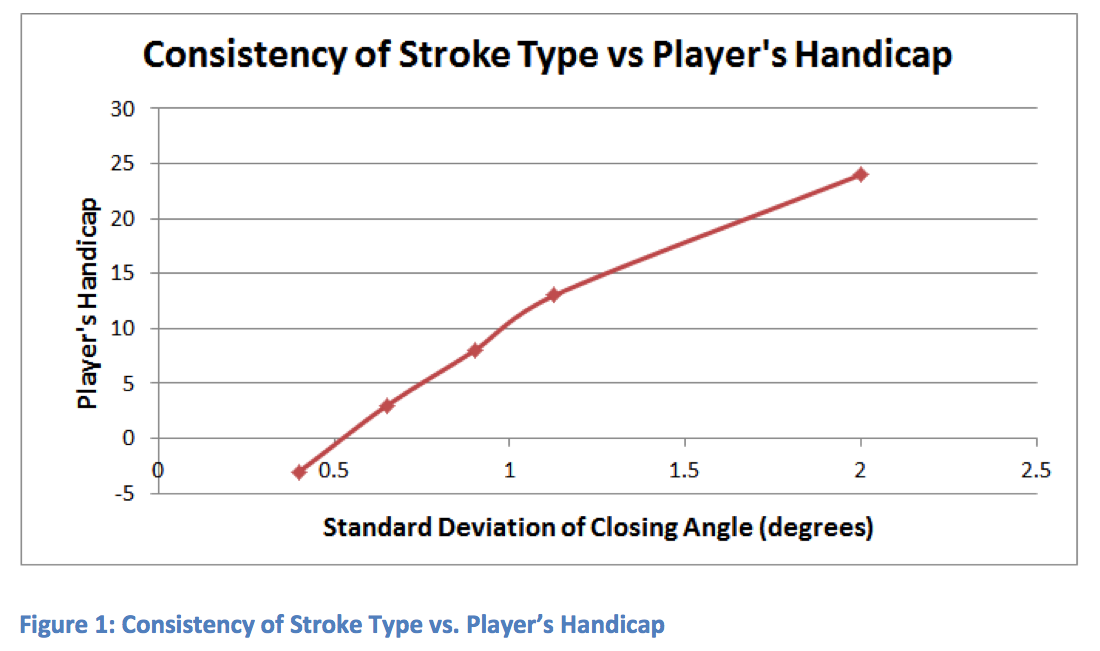
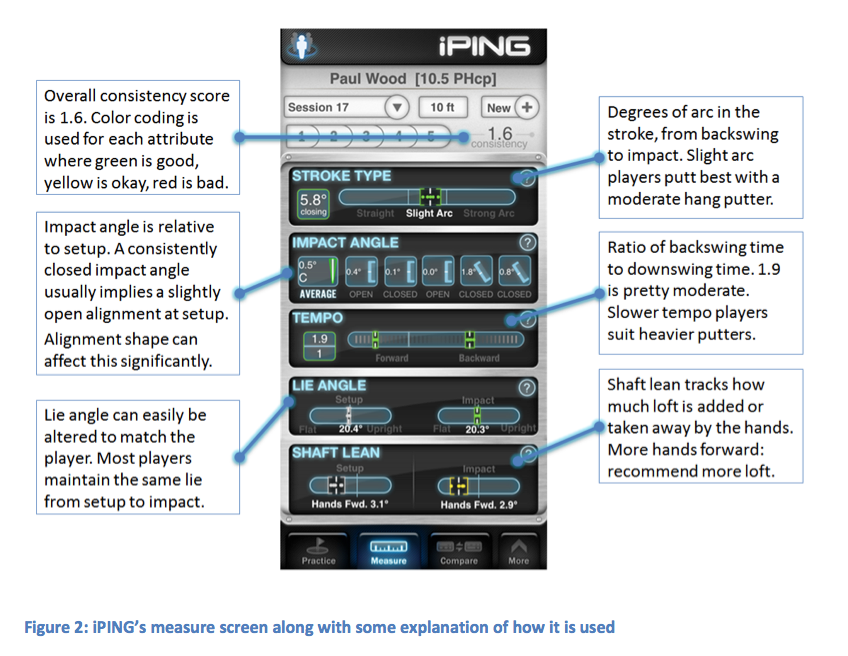




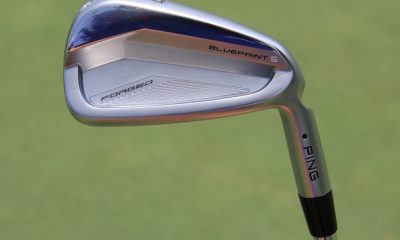

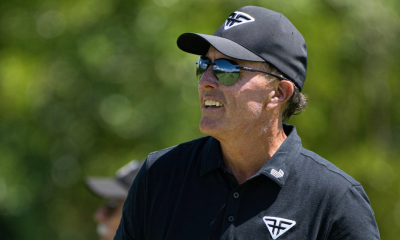



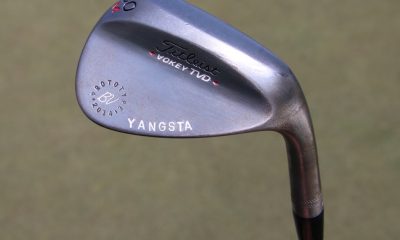

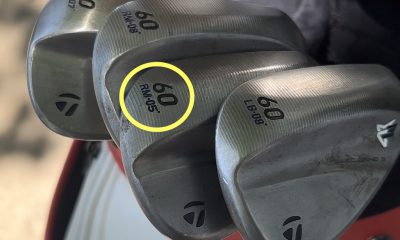














Anna Simon
Nov 4, 2015 at 5:10 pm
Hi Paul,
I am currently working with a company that is building a new product that helps golfers improve and analyze their golf swing, taking a multi-sensor approach to the swing analyzers products on the market. The product’s Kickstarter will be launching later this month. Would you like us to get in touch with you to test the product? If so, please send me your email to [email protected].
Many Thanks,
Anna Simon
Ian Jones
Feb 10, 2015 at 8:23 pm
Yes – bought it for the galaxy S3 (even got the S3 because Ping did this alleged great app)….. AND….of course it didnt work. very disappointed. Surprisingly Ping customer service didnt seem to want to know when I called. Was there a recall since it didnt work ? Now have a $30 piece of plastic sat in a box, keeping company with old yardage books.
killerbgolfer
Feb 8, 2015 at 10:27 pm
Love what you do PING. Consistently the most progressive company with outstanding products and service.
Mike
Feb 7, 2015 at 3:05 pm
Do Ping have plans to release an iPhone 6 cradle? I’m lost without one.
Rene Realme
Feb 6, 2015 at 4:27 pm
Galaxy S4 cradle please!
Mark
Feb 6, 2015 at 3:27 pm
So any thoughts on providing this app for Android users who are 50% of the smartphone market??????
Paul Wood
Feb 6, 2015 at 6:50 pm
Unfortunately, the android platform makes this really tough. There’s so much variation in phones and sensors. We looked at it seriously and even briefly released a version for the Galaxy S3 but even just that 1 model had something like 10 different hardware versions, so it made it almost impossible to ensure functionality and accuracy. Maybe we’ll have to look at something where we use a MEMS device instead of the phone to link up to iPing as a solution for Android users. We’ll keep looking!
Mike Olsen
Feb 6, 2015 at 12:53 pm
Paul,
Just curious as to how the iPing data stands up to the SAM Puttlab output…both in terms of accuracy and consistency of the data? Thanks
Paul Wood
Feb 6, 2015 at 6:54 pm
We have a SAM Puttlab in our lab and we used both the SAM and high speed video data to check the accuracy and consistency of our data. I myself was surprised how good the phone’s sensors did in our testing. Clearly there are quite a few aspects of the putt that the SAM measures that we don’t but the SAM is quite a big investment for someone.
John Grossi
Feb 6, 2015 at 5:42 am
Paul, Thanks for this explanation on Ping’s putter app. However, I am interested in Ping’s NFlight(sp) device. Would you consider an article on it? These MEMS devices are very interesting on how they relate to the golf swing.
Paul Wood
Feb 6, 2015 at 11:00 am
I’d certainly be very happy to do an article on nFlight. I might try to cover a couple of other topics relating to club technology or golf physics first but I’ll try to come back to fitting tools again. I’m really interested in MEMS technology personally – it would be a pleasure to write more on the subject.
mike
Feb 5, 2015 at 5:16 pm
Great product. It is very consistent and helped me to slow down my putts.
Golfraven
Feb 5, 2015 at 2:40 pm
The cradle still fits the iphone 5 but I am not sure I tested it never iphone 6 model. reminds me to take it out of my golf bag locker and use it again. Saddly the app is lacking better stats analysis and is not showing dates when you did the putting therefor difficult to compare unless you write dates in your notepad. i agree that putting with the phone does not affect the stroke itself but I feel the weight of it and also the impact sound is slighly different. however it is great tool which provides important data on stroke type, tempo, shaft lean, lie angle etc.. I would say biggest feedback is weather your stroke is consistent, independent of how you roll the ball. I am close to +PHcp and it helps me to focus when practicing. All pros are around +4 and comparing against those is good indication what your putting is lacking. So as with anything in golf, consistency is key
MS
Feb 5, 2015 at 4:38 pm
Golfraven – On the “Measure” screen, you can change the name of each session. Look at the picture above where it says “Session 17” – if you tape on the name (not the drop down arrow), it will bring up the keyboard and you can change the session to a date or whatever you would to call it.
The best way to utilize this is on a day when you are putting well. Take a quick session and save it by date, “good putting day”, etc so you know where to find it. Then you will have it stored what your stats are when you are rolling it well. Helps you go back and compare when you have an off day and can help figure out why.
Golfraven
Feb 5, 2015 at 5:48 pm
Thanks for the hint, much appreciated. been using this now for last 2-3 years and never figured it out.
bph
Feb 5, 2015 at 1:41 pm
How does it work? The answer is it doesn’t. Be careful before buying this. The app has been broken for at least a year (on iPhone at least), leaving me with a useless $30 piece of plastic.
MS
Feb 5, 2015 at 4:39 pm
Have you tried deleting the app and reinstalling?
Paul Wood
Feb 5, 2015 at 6:29 pm
I’m really sorry to hear your app is not working correctly. Our application support would be happy to help you get that figured out. Their number is 855-687-5700 or [email protected] We do our best to make sure it works for as many people as possible, but I’m not going to lie, making apps is hard when hardware and software are progressing at such a fast pace.
Ed
Feb 5, 2015 at 1:08 pm
I have one for my iphone4, which i don’t have anymore..
Will ping discount if i get one for iphone 5 or 6?
Double Mocha Man
Feb 5, 2015 at 1:05 pm
The app works great. But finding a cradle that fits my phone is problematic. So I’ve used duct tape in the past. One more use for duct tape…
Tom Stickney
Feb 5, 2015 at 10:29 am
It’s a great tool for sure.